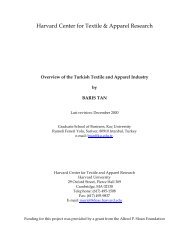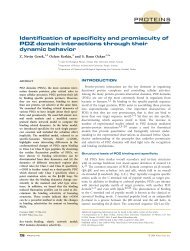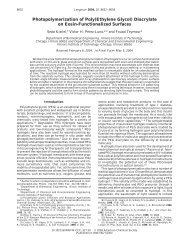Roman Landholding in Asia Minor Author(s): Thomas Robert ...
Roman Landholding in Asia Minor Author(s): Thomas Robert ...
Roman Landholding in Asia Minor Author(s): Thomas Robert ...
You also want an ePaper? Increase the reach of your titles
YUMPU automatically turns print PDFs into web optimized ePapers that Google loves.
Vol. lxv]<br />
<strong>Roman</strong> <strong>Landhold<strong>in</strong>g</strong> <strong>in</strong> <strong>Asia</strong> M<strong>in</strong>or<br />
223<br />
ested <strong>in</strong> the transaction.82 It has been assumed that the city<br />
was founded upon fiscal land, but the mention of the property<br />
of Tiberius Claudius Socrates with<strong>in</strong> the town makes it appa-<br />
rent that the land was not wholly so. The true <strong>in</strong>terpretation<br />
may be that the revenues from some fiscal land <strong>in</strong> the neigh-<br />
borhood were diverted to support the struggl<strong>in</strong>g f<strong>in</strong>ances of<br />
the newly founded city.83 The proconsul was <strong>in</strong>terested as<br />
the overseer of the municipal f<strong>in</strong>ances, the procurator because<br />
of the diversion of imperial funds.<br />
The foundations of Hadrian <strong>in</strong> Mysia Abbrettene 84 likewise<br />
provide no proof of the existence of huge tracts of fiscal or<br />
patrimonial land there. The development of the adjacent<br />
region of Mysia Abbaitis affords an <strong>in</strong>structive analogy.<br />
Dur<strong>in</strong>g the early republic Abbaitis was a union of villages or<br />
forts with a common co<strong>in</strong>age. Later the union was dissolved<br />
and <strong>in</strong> its place we f<strong>in</strong>d <strong>in</strong> the early empire a number of sepa-<br />
rate towns, Ancyra, Synaus, and possibly Cadi.85 Abbrettene<br />
probably evolved <strong>in</strong> the same way but more slowly s<strong>in</strong>ce it<br />
was a rougher and more backward region.86 It is no more<br />
necessary to assume that Hadrian alienated fiscal or public<br />
lands <strong>in</strong> <strong>Asia</strong> to support his foundations than <strong>in</strong> Africa.87 In<br />
both prov<strong>in</strong>ces it was his policy to give recognition to the<br />
82 I.G.R.P. iv, 1156; on this and other Hadrianic foundations, cf. Rostovtzeff,<br />
Kol. 294, note 2; Weber, Untersuchungen zur Geschichte des Kaisers Hadrians<br />
(Leipzig, Teubner, 1907), 136-138. S<strong>in</strong>ce Stratoniceia was destroyed <strong>in</strong> the<br />
war with Aristonicus it is possible that it became public land but improbable<br />
that it rema<strong>in</strong>ed public until the 2d century A.D.; cf. Class. Phil. xxIx (1934),<br />
232-234. On properties of Livia at Thyatira; see note 70.<br />
83 Hadrian diverted 3,000,000 HS of <strong>Asia</strong>tic revenue to aid the city of Troas<br />
<strong>in</strong> build<strong>in</strong>g an aqueduct, Philostr. Vit. Soph. p. 548, on Herodes Atticus.<br />
84 Hadrianutherae, Hadriani, Hadrianeia, Cass. Dio LIX, 10; Script. Hist.<br />
Aug., Had. 21; Brit. Mus. Cat., Co<strong>in</strong>s of Mysia, 72-76; Head, Hist. Num.2 528.<br />
85 Holleaux, Rev. Et. Anc. xxi (1919), 2, l<strong>in</strong>es 14-20; C.I.L. i2, 743; I.G.R.P.<br />
iv, 555 f.; Head, Hist. Num.2 663; Brit. Mus. Cat., Co<strong>in</strong>s of Mysia, 1; Co<strong>in</strong>s of<br />
Phrygia, xx f., xxix-xxxi, xlii-xliv, xcvi f, 1 f., 58-68, 116-128, 387-391.<br />
86 Cf. Strabo xII, 8, 9; Luc. Alex. 2 respectively, on the brigands Cleon and<br />
Tilliborus.<br />
87 Cf. Broughton, <strong>Roman</strong>ization of Africa Proconsularis (Baltimore, Johns<br />
Hopk<strong>in</strong>s, 1929), 146, 149.





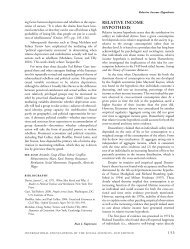

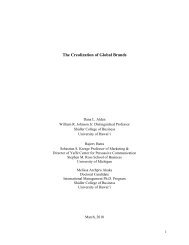

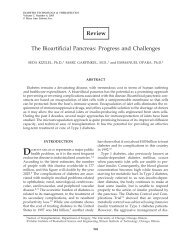
![]_[O](https://img.yumpu.com/10363126/1/190x138/-o.jpg?quality=85)
